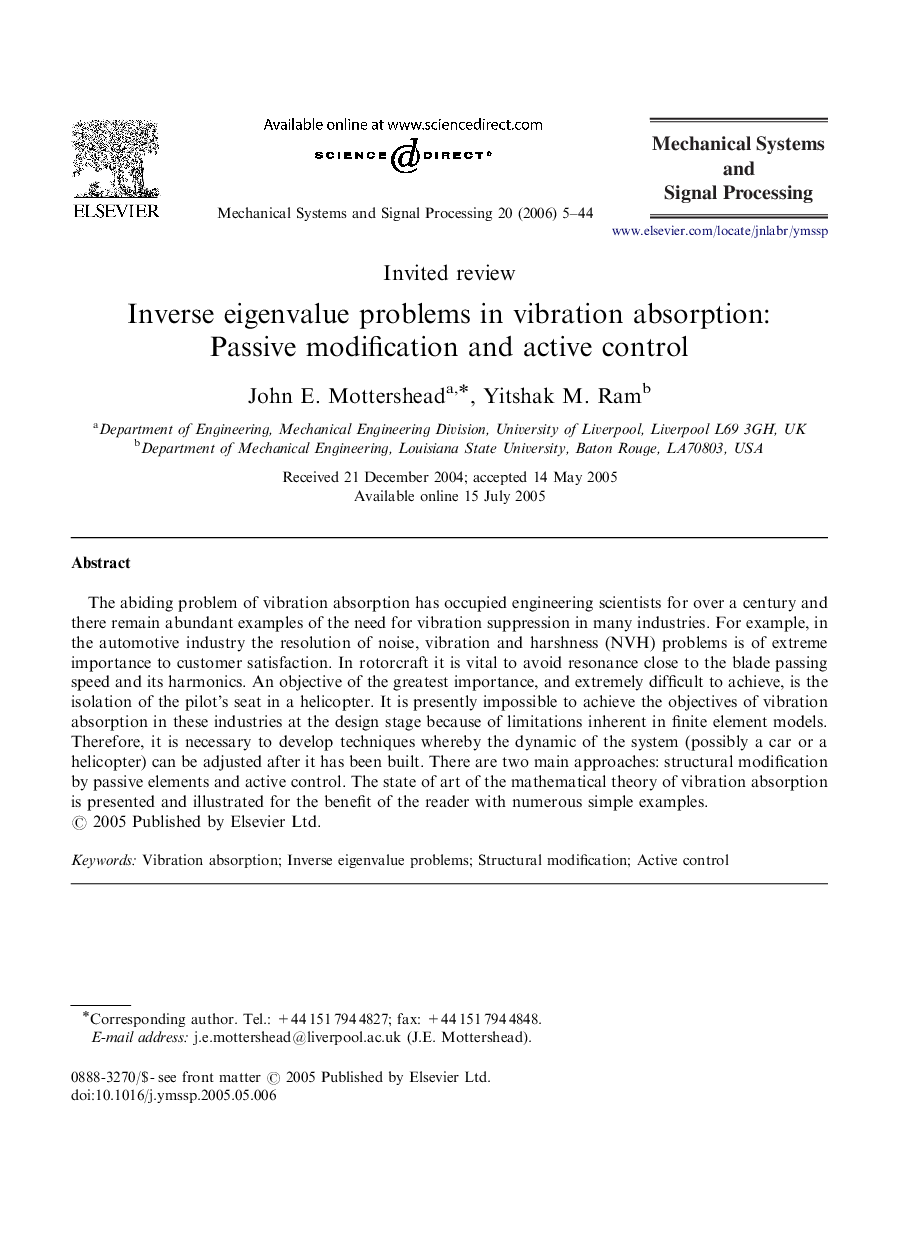| Article ID | Journal | Published Year | Pages | File Type |
|---|---|---|---|---|
| 559986 | Mechanical Systems and Signal Processing | 2006 | 40 Pages |
The abiding problem of vibration absorption has occupied engineering scientists for over a century and there remain abundant examples of the need for vibration suppression in many industries. For example, in the automotive industry the resolution of noise, vibration and harshness (NVH) problems is of extreme importance to customer satisfaction. In rotorcraft it is vital to avoid resonance close to the blade passing speed and its harmonics. An objective of the greatest importance, and extremely difficult to achieve, is the isolation of the pilot's seat in a helicopter. It is presently impossible to achieve the objectives of vibration absorption in these industries at the design stage because of limitations inherent in finite element models. Therefore, it is necessary to develop techniques whereby the dynamic of the system (possibly a car or a helicopter) can be adjusted after it has been built. There are two main approaches: structural modification by passive elements and active control. The state of art of the mathematical theory of vibration absorption is presented and illustrated for the benefit of the reader with numerous simple examples.
